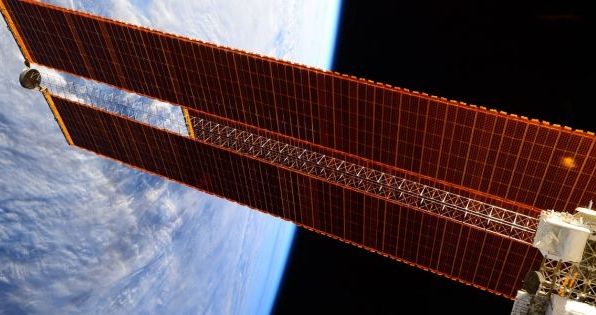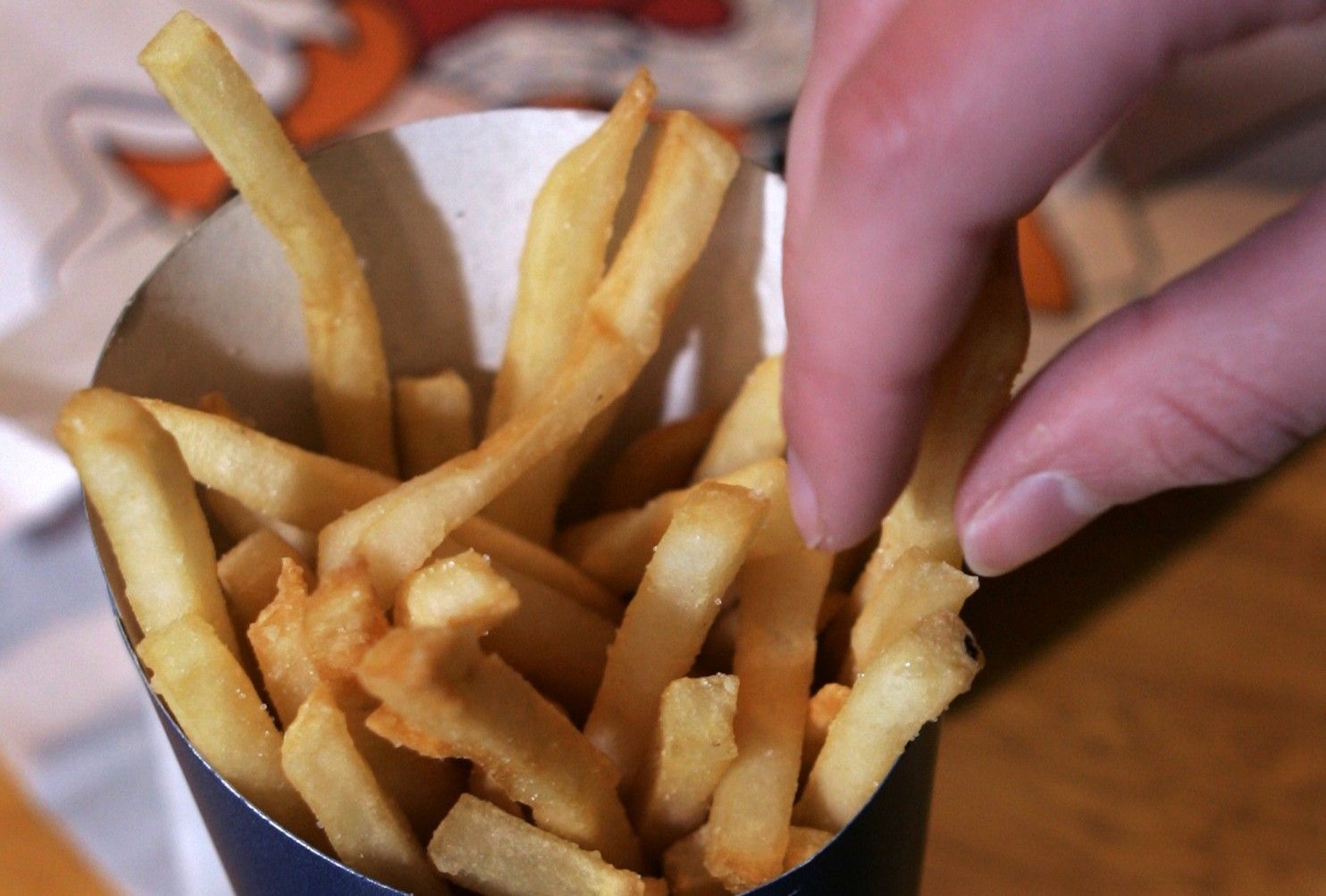Page 10737
Apr 16, 2016
The universe will end much sooner than previously thought, says study
Posted by Sean Brazell in category: space
Figures.
New calculation shows that universal expansion appears to be 8 percent greater than expected, which isn’t good news.
Continue reading “The universe will end much sooner than previously thought, says study” »
Apr 16, 2016
This Singapore public bus service is now offering WiFi-On-The-Go
Posted by Shailesh Prasad in categories: internet, transportation
NEWS
SINGAPORE
This Singapore public bus service is now offering WiFi-On-The-Go.
As part of the Heterogeneous Network (HetNet) Trials, commuters can now connect to WiFi on selected SMRT Service 176 buses.
By Yon Heong Tung
12 Apr, 2016.
Continue reading “This Singapore public bus service is now offering WiFi-On-The-Go” »
Apr 16, 2016
Caltech’s 2500 Orbiting Solar Panels Could Provide Earth With Limitless Energy
Posted by Shailesh Prasad in categories: solar power, space, sustainability
The Space Solar Power Initiative (SSPI), a collaboration between Caltech and Northrup Grumman, has developed a system of lightweight solar power tiles which can convert solar energy to radio waves and can be placed in orbit to beam power to an energy-thirsty Earth.
One of the greatest challenges facing the 21st Century is the issue of power—how to generate enough of it, how to manufacture it cheaply and with the least amount of harmful side-effects, and how to get it to users.
The solutions will have to be very creative—rather like what the Space Solar Power Initiative (SSPI), a partnership between Caltech and Northrup Grumman, has devised.
Continue reading “Caltech’s 2500 Orbiting Solar Panels Could Provide Earth With Limitless Energy” »
Apr 15, 2016
SLAC researchers recreate the extreme universe in the lab
Posted by Andreas Matt in categories: nuclear energy, physics, space, supercomputing
Conditions in the vast universe can be quite extreme: Violent collisions scar the surfaces of planets. Nuclear reactions in bright stars generate tremendous amounts of energy. Gigantic explosions catapult matter far out into space. But how exactly do processes like these unfold? What do they tell us about the universe? And could their power be harnessed for the benefit of humankind?
To find out, researchers from the Department of Energy’s SLAC National Accelerator Laboratory perform sophisticated experiments and computer simulations that recreate violent cosmic conditions on a small scale in the lab.
“The field of laboratory astrophysics is growing very rapidly, fueled by a number of technological breakthroughs,” says Siegfried Glenzer, head of SLAC’s High Energy Density Science Division. “We now have high-power lasers to create extreme states of matter, cutting-edge X-ray sources to analyze these states at the atomic level, and high-performance supercomputers to run complex simulations that guide and help explain our experiments. With its outstanding capabilities in these areas, SLAC is a particularly fertile ground for this type of research.”
Apr 15, 2016
New Research Suggests That Time Runs Backwards Inside Black Holes
Posted by Andreas Matt in categories: cosmology, physics
A new research paper published in Physical Review Letters has brought forward a significant new understanding of general relativity laws, and has found some strange physics taking place inside black holes. Specifically, that the direction of time could be reversed within them. Several physical procedures are perfectly symmetric in time. Take a pendulum for instance. If someone shows you a video of a pendulum swinging, you cannot differentiate if the video is actually moving forward or backward. But some processes are not symmetric at all. We can tell that a pendulum will ultimately slow because of friction and we know that it was triggered at some point, so we can give a temporal direction to physics. The directionality of time and our view of it was called the “Arrow of Time” by British astronomer Arthur Eddington, and it has been connected to the entropy of the cosmos.
Apr 15, 2016
Researchers have found a ‘striking’ new side effect from eating fast food — By Roberto A. Ferdman | The Washington Post
Posted by Odette Bohr Dienel in categories: food, health
“Researchers at George Washington University have linked fast-food consumption to the presence of potentially harmful chemicals, a connection they argue could have “great public health significance.””
Tag: nutrition
Apr 15, 2016
Membrane spacecraft with 7.7 kW/kg power-to-weight ratio and 4000 ISP
Posted by Klaus Baldauf in categories: solar power, space travel, sustainability
A ‘brane’ is a dynamical object that can propagate through spacetime. Flattening a spacecraft into a membrane, or 2-brane, can produce a low mass vehicle with ultra-high power-to-weight ratio (7.7 kW/kg using thin film solar cells). If most of this power is used by an array of thinned, distributed electrospray thrusters with a specific impulse of 4000 s, a Brane Craft could start in low Earth orbit, land on Phobos, and return to low Earth orbit.
Other possible targets include any near-Earth asteroid and most main belt asteroids. Propellant is stored as a liquid within a 10-micron wide gap between two Kapton sheets that form the main structure of the Brane Craft.
This NASA NIAC project will study how to design an ultra-light dynamic membrane spacecraft, with 3-axis attitude determination and control plus navigation, that can significantly change both its shape and orbit. Conventional sensors like star trackers will have to be replaced by 2-dimensional alternatives. Estimated mass is about 35 grams for a 1 square meter Brane Craft.
Continue reading “Membrane spacecraft with 7.7 kW/kg power-to-weight ratio and 4000 ISP” »
Apr 15, 2016
The Next Frontier For Ambitious Entrepreneurs: Space
Posted by Klaus Baldauf in categories: futurism, space
There’ll be 10,000 private space companies started in the next decade. This is what it’s like to launch a future possible “space unicorn.”
Apr 15, 2016
WiFi capacity doubled at less than half the size
Posted by Shailesh Prasad in categories: computing, internet, mobile phones, nanotechnology
“This technology could revolutionize the field of telecommunications,” says Krishnaswamy, director of the Columbia High-Speed and Mm-wave IC (CoSMIC) Lab. “Our circulator is the first to be put on a silicon chip, and we get literally orders of magnitude better performance than prior work. Full-duplex communications, where the transmitter and the receiver operate at the same time and at the same frequency, has become a critical research area and now we’ve shown that WiFi capacity can be doubled on a nanoscale silicon chip with a single antenna. This has enormous implications for devices like smartphones and tablets.”
Krishnaswamy’s group has been working on silicon radio chips for full duplex communications for several years and became particularly interested in the role of the circulator, a component that enables full-duplex communications where the transmitter and the receiver share the same antenna. In order to do this, the circulator has to “break” Lorentz Reciprocity, a fundamental physical characteristic of most electronic structures that requires electromagnetic waves travel in the same manner in forward and reverse directions.
“Reciprocal circuits and systems are quite restrictive because you can’t control the signal freely,” says PhD student Negar Reiskarimian, who developed the circulator and is lead author of the Nature Communications paper. “We wanted to create a simple and efficient way, using conventional materials, to break Lorentz Reciprocity and build a low-cost nanoscale circulator that would fit on a chip. This could open up the door to all kinds of exciting new applications.”
Continue reading “WiFi capacity doubled at less than half the size” »


















